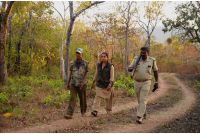Mysuru :
Vedashastra Poshini Sabha, Khille Mohalla, Mysuru, has organised a function to felicitate Sanskrit scholars on Mar. 20 at 4.30 pm at Jaganmohan Palace in city.
Well-known Scholar Dr. K.S. Narayanacharya of Bengaluru will do the honours. Vid. Prof. B.N. Nagaraj Bhat, President, Vedashastra Poshini Sabha, will preside. The Sabha will be felicitating the following 11 Vedic scholars tomorrow:
1. Vid. Dwijaraja Umashiva Upadhyaya: Aged 89, he is a native of the famous Gokarna in Kumta taluk of Uttara Kannada district. An expert in Rig Veda, he retired as chief teacher of Vidyadayini Vedashastra School in Gokarna.
2. Vid. Prabhakara Dixit: An expert in Rig Veda, he is a resident of Vidyaranyapura Agrahara in Sringeri Taluk of Chikkamagaluru district. He taught Veda to more than 150 students at Sadvidya Sanjeevini Pa-tashale in Sringeri. He is now 65-years-old.
3. Vid. P. Vishweswara Bhatta: The 74-year-old Krishna Yajur Veda scholar, who has taught more than 600 students, is a resident of Pallatadka village in Kasargod, Kerala.
4. Vid. Shivarama Bhatta Aleka: A Sama Veda expert from Hosakuli village in Uttara Kannada district, the 78-year-old scholar has served in Sri Raghavendra Bharathi Veda Samskrutha Mahavidyalaya for more than 40 years and taught over 200 students.
5. Vidu. Dr. K. L. Prasannakshi: A native of Kolar district, Vidu. Prasannakshi, 62, served as Professor in Maharani’s College and Government Women’s College in Mandya. A resident of Mysuru, she has mastered Alankara Shastra and has worked for popularising Sanskrit language. She has also authored ‘Nityamadhiyatam’ and ‘Yogavasistasara.’
6. Vid. S. Narayana Bhatta: A native of Golagodu village in Sagar taluk of Shivamogga district, the 74-year-old scholar has mastered the Vyakarana Shastra and has worked as a lecturer in Kasturba PU College of Rashtriya Shikshana Samsthe in Shivamogga.
7. Vid. Nagendra Anantha Bhatta: The 86-year-old scholar is the master of Aagama, Sasya, Vaastu, Jala and Murti Shatras along with astrology. A native of Hithnalli village in Uttara Kannada district, he has also involved himself in agriculture.
8. Vid. Dr. M. A. Lakshmithatacharya: Former Director of Sanskrit Research Institute in Melukote, he was born in the spiritual land of Melukote in Mandya district. A Vidwat degree holder in Navinanyaya and Alankara Shastra, the 79-year-old scholar worked as a Professor in Bangalore University and also authored books like Sabhaparva Sangraha, Ramanuja Life’s Philosophy among others.
9. Vid. Dr. Venimadhavashastry B. Joshi: The 67- year-old scholar is a resident of Sadanakeri in Dharwad district. An expert in Vedanta, Nyaya and Alankara Shastra, he served in Karnataka College at Dharwad and Karnataka University. He has to his credit around 150 research papers.
10. Vid. Dr. M.E. Rangachar: A native of Melukote in Mandya district, the 81-year-old scholar has expertise in Vishistadwaitha, Vedanta and Nyaya Shastra. Having served in D.V.S Mahavidyalaya in Shivamogga, he is the author of ‘Maharshi Vedavyasaru,’ ‘Ramanageeta,’ ‘Raghavayadaveeyam’ and other books. His books have been published in Kannada, English and Sanskrit languages.
11. Vid. Dr. K.S. Narayanacharya: This 83- year-old scholar is a resident of Kanakanahalli in Bengaluru. He served as an English lecturer and as professor in Karnataka Arts College, Dharwad. Having gained mastery over Sanskrit, he is known for his discourses on Ramayana, Mahabharata, Bhagavata and Bhagavad Gita.
source: http://www.starofmysore.com / Star of Mysore / Home> General News / March 19th, 2016







